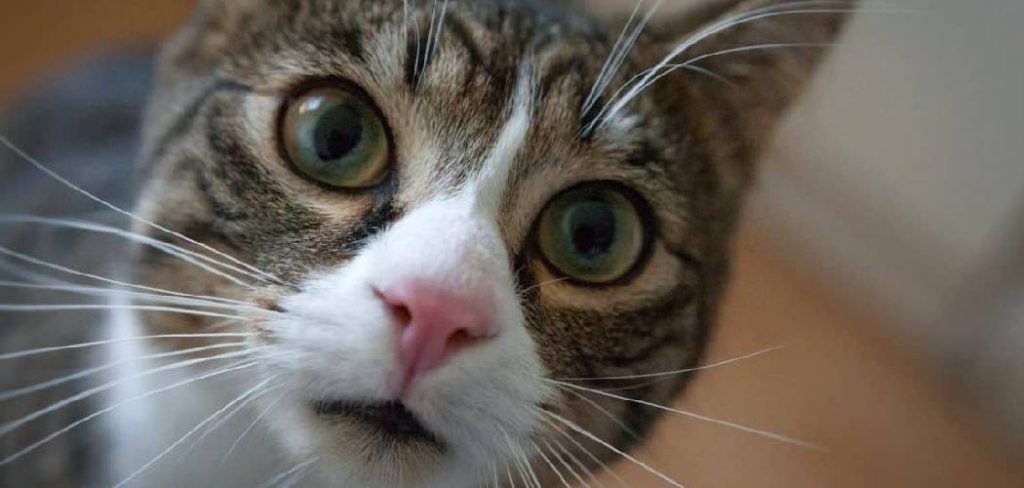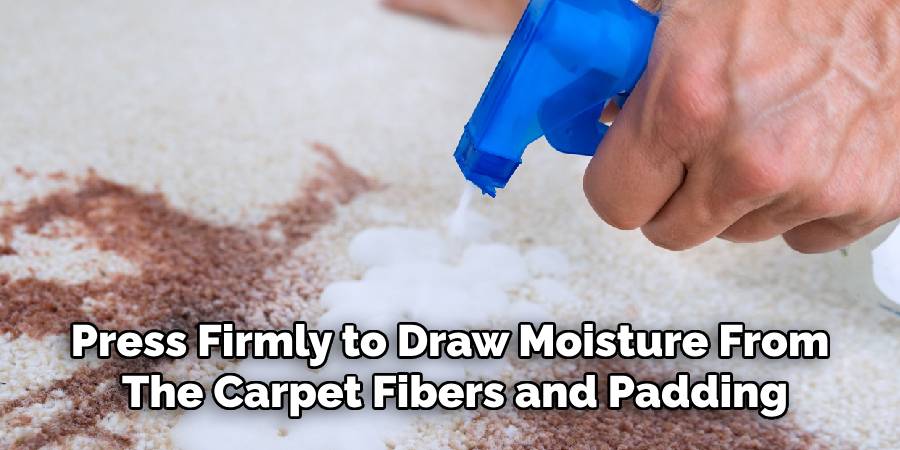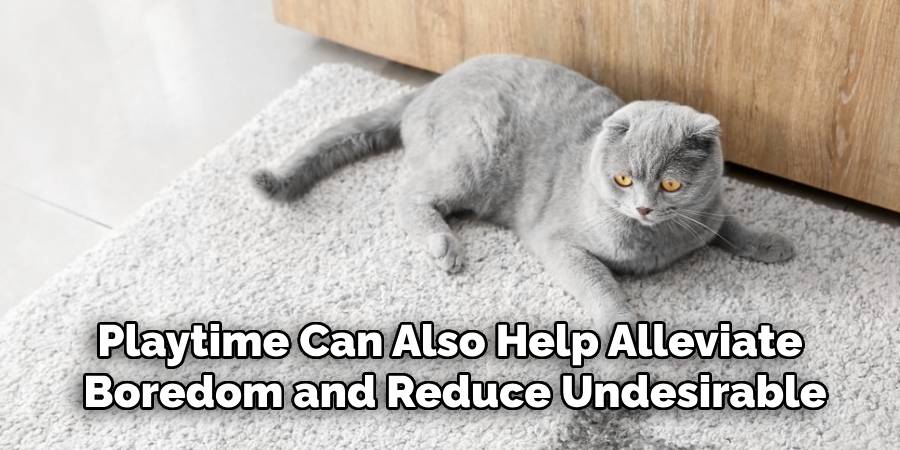Cats are wonderful companions, but dealing with lingering odors from accidents on your carpet can be a challenge. The smell not only becomes unpleasant over time but can also be difficult to remove if not treated properly. Fortunately, with the right approach, you can effectively eliminate cat odors and restore your carpet’s freshness. This guide will walk you through simple and effective steps on how to get cat smell out of carpet.

Why Cat Odors Linger in Carpets
Cat odors can be particularly stubborn due to the composition of cat urine. When a cat has an accident on the carpet, their urine seeps deep into the carpet fibers, padding, and even the flooring underneath. Cat urine contains a high concentration of uric acid, which forms crystalline structures that are not water-soluble and can persist even after cleaning attempts.
Additionally, as the urine dries, it releases ammonia and other strong-smelling compounds that contribute to the lingering odor. Compounding the issue, cats have a strong sense of smell, and if the area isn’t thoroughly cleaned, they may return to the same spot, reinforcing the odor and making it harder to eradicate. Understanding why these odors are so persistent is the first step in effectively tackling the problem.
Identifying the Source of the Odor
To effectively address the problem, it is essential to locate the exact source of the odor. Begin by thoroughly inspecting the area where the smell is strongest, paying close attention to hidden or hard-to-reach spots, such as under furniture, along baseboards, or on soft materials like carpets and upholstery.
A blacklight can be a useful tool, as it helps reveal dried urine stains that are not immediately visible to the naked eye. By identifying all contaminated areas, you can ensure that no spots are overlooked, thereby increasing the likelihood of fully eliminating the odor.
10 Methods How to Get Cat Smell Out of Carpet
1. Blot and Remove Fresh Urine Immediately
The first and most critical step in eliminating cat smell from carpet is prompt action if the accident is fresh. Use absorbent paper towels or a clean cloth to blot as much urine as possible without rubbing it in. Press firmly to draw moisture from the carpet fibers and padding below. You may need to repeat this several times with fresh towels until the area feels only slightly damp.

Acting quickly prevents urine from seeping deeper into the carpet, which makes the odor easier to remove later. Always avoid scrubbing at this stage, as it can spread the stain and scent further.
2. Rinse the Area with Cold Water
After blotting, rinse the soiled section with cold water to dilute any remaining urine. Pour a small amount directly on the area and then blot again to absorb the liquid. Cold water helps flush out urine crystals without setting the stain, unlike warm or hot water, which can bake odors into the fibers. If you have a wet/dry vacuum or carpet extractor, use it to suck up the rinse water thoroughly. This simple method is highly effective for fresh spots and prepares the carpet for deeper cleaning steps.
3. Use Enzyme Cleaners for Deep Odor Removal
One of the most effective tools for removing cat smell is an enzymatic cleaner specifically designed for pet urine. These cleaners contain natural enzymes and beneficial bacteria that break down the proteins and uric acid in cat urine—components responsible for the lingering odor. Generously apply the enzyme cleaner to the affected area, ensuring it reaches deep into the carpet and padding.
Let it sit for 10–15 minutes or as directed on the label, then blot up any excess. Enzyme cleaners often require time to work fully, so avoid rinsing or covering the area immediately after application.
4. Sprinkle Baking Soda for Natural Deodorizing
Baking soda is a powerful, natural deodorizer that helps neutralize lingering smells embedded in carpet fibers. Once the area has been cleaned and dried, sprinkle a generous layer of baking soda over the spot and let it sit for several hours—or overnight for best results. The powder will absorb remaining odors, moisture, and any residual bacteria.
After the wait, vacuum the area thoroughly to remove all traces of baking soda. Repeat the process if needed, especially for older stains. This method is safe, budget-friendly, and works well alongside other cleaning techniques.
5. Apply White Vinegar and Water Solution
White vinegar is another natural and accessible odor neutralizer. Mix equal parts white vinegar and water in a spray bottle and apply it directly to the affected carpet area. The vinegar helps to break down odor-causing compounds and eliminate the ammonia-like smell of cat urine.

After spraying, let the solution sit for 5–10 minutes, then blot dry. While the initial vinegar scent may be strong, it dissipates as it dries, taking the urine odor with it. For added cleaning power, you can follow this treatment with a light sprinkle of baking soda.
6. Use a Carpet Cleaner or Steam Cleaner
For deeper cleaning, especially if the smell is widespread or embedded, a carpet cleaner or steam cleaner can help rejuvenate the fibers and flush out odor residues. Use a pet-safe carpet shampoo, or better yet, an enzyme-based cleaning solution in the machine.
Follow the manufacturer’s instructions and make multiple slow passes over the affected area. Be sure to extract as much water as possible to avoid dampness that can lead to mold. Allow the carpet to dry completely, and repeat the process if necessary. This method not only tackles odor but also restores the overall appearance of the carpet.
7. Treat the Carpet Padding if Needed
In cases where the urine has penetrated the carpet and soaked into the padding underneath, surface treatments alone won’t suffice. Carefully pull back the carpet (if possible) to inspect the padding. If there’s visible staining or persistent smell, you may need to replace the padding in that area.
Alternatively, you can apply enzyme cleaner directly to the padding and allow it to dry naturally. While this requires more effort, it’s essential for fully eliminating entrenched cat odors that keep returning despite repeated surface cleaning.
8. Use Activated Charcoal or Odor Absorbers
After cleaning, maintain a fresh-smelling room by placing activated charcoal, odor absorber gels, or baking soda containers near the affected area. These substances pull lingering odors out of the air and help keep the space smelling neutral while the carpet continues to off-gas and dry.

Activated charcoal is especially effective at removing pet odors and can be left in the room for several days. Replace these odor absorbers regularly for continued effectiveness, particularly in homes with ongoing pet activity.
9. Air Out the Room Thoroughly
Ventilation plays a key role in clearing out persistent carpet odors. Open windows and doors to allow fresh air to circulate, helping the carpet dry faster and dissipating any residual cleaner or vinegar smell.
Use fans or a dehumidifier to speed up drying, particularly in humid environments where moisture lingers in carpet fibers. A well-ventilated space not only smells better but also discourages bacterial growth and reduces the chance of repeat accidents by your cat, who may return to the same spot if odors remain.
10. Prevent Future Accidents with Repellents and Training
Once the carpet is clean, it’s important to prevent repeat incidents. Cats tend to revisit the same spot if they can still smell even trace amounts of urine. Use a commercial pet repellent spray or make your own with a mixture of citrus essential oils and water.
These scents deter most cats. You can also cover the area temporarily with aluminum foil, a plastic mat, or a furniture piece to discourage access. If accidents continue, consult a vet to rule out medical issues and review your cat’s litter box habits and placement.
Things to Consider When Addressing Cat Behavior Issues
When addressing cat behavior issues, it’s essential to be patient and observant. Cats are sensitive creatures, and changes in their behavior often signal underlying problems. Start by ensuring their basic needs are met, including access to a clean litter box, fresh water, nutritious food, and a safe, comfortable environment.
Pay attention to any new stressors in their surroundings, such as household changes, new pets, or loud noises, as these can impact their behavior. Providing enrichment through toys, scratching posts, and interactive playtime can also help alleviate boredom and reduce undesirable actions. If the issue persists, seek advice from a veterinarian or a professional animal behaviorist for tailored solutions.

Conclusion
Getting cat smell out of carpet requires patience, persistence, and a multi-step approach. From blotting fresh stains and using enzymatic cleaners to leveraging natural deodorizers like baking soda and vinegar, each method plays a part in restoring a clean, fresh-smelling home.
Whether you’re tackling a one-time accident or chronic issue, combining deep cleaning with odor prevention and training ensures long-term success. By treating both the stain and its cause, you create a healthier and more pleasant living environment for both you and your feline companion.
About
Jennifer Branett is a distinguished figure in the world of Diy design, with a decade of expertise creating innovative and sustainable Diy solutions. His professional focus lies in merging traditional craftsmanship with modern manufacturing techniques, fostering designs that are both practical and environmentally conscious. As the author of diy, Jennifer delves into the art and science of furniture-making, inspiring artisans and industry professionals alike.
Education RMIT University
(Melbourne, Australia) Associate Degree in Design (Jennifer Branett) Focus on sustainable design, industry-driven projects, and practical craftsmanship. Gained hands-on experience with traditional and digital manufacturing tools, such as CAD and CNC software.
Nottingham Trent University
(United Kingdom) Bachelor’s in diyfastly.com and Product Design (Honors) Specialized in product design with a focus on blending creativity with production techniques. Participated in industry projects, working with companies like John Lewis and Vitsoe to gain real-world insights.
Publications and Impact
In diy, Jennifer Branett his insights on indoor design processes, materials, and strategies for efficient production. His writing bridges the gap between artisan knowledge and modern industry needs, making it a must-read for both budding designers and seasoned professionals.


